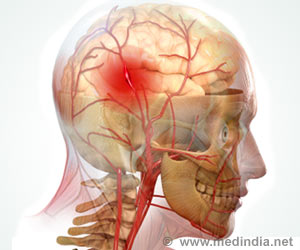The Improving Treatment with Rapid Evaluation of Acute Stroke via Mobile Telemedicine, allows doctors to be in the ambulance, virtually, while patients were en route.

‘A clinical trial found that using iTREAT while transporting stroke patients to hospital was as accurate as a bedside assessment by a neurologist, leading to faster treatment once the patient reaches the hospital.’





The Improving Treatment with Rapid Evaluation of Acute Stroke via Mobile Telemedicine, or iTREAT, a study used a low-cost, tablet-based system that allows physicians to be in the ambulance, virtually, with patients who are being transported. The iTREAT kit contains a tablet suction-mounted to the wall of an ambulance, a portable modem, and antenna, which allow an encrypted form of video consultation between a neurologist and the stroke patient, as well as with the EMS provider.
“In our initial feasibility testing, we partnered with rural ambulance agencies to allow enough time for the stroke assessment and tested our mobile telestroke system in simulated stroke scenarios,” explained Andrew Southerland, MD, the head of the University of Virginia Health System team that conducted the study.
The study found that more than 90 percent of the test runs conducted locally had sufficient quality and audiovisual connectivity to perform the consultation. The researchers determined that stroke testing results were 98 percent correlated with assessments that would have been done at the bedside. In other words, iTREAT was just as accurate as a bedside assessment by a neurologist, which would allow for better transport decisions by the EMS team and potentially faster treatment of the patient once at the hospital.
Stroke Assessment: Every Second Counts
Advertisement
Time is Brain
Advertisement
The treatment of ischemic stroke, the most common type of stroke, is a clot-busting medication and endovascular procedure that can resolve the obstruction in the artery that is preventing blood flow to the brain. But these treatments must be administered as quickly as possible within a few hours after the onset of the stroke. Many stroke patients do not arrive at the hospital quickly enough to receive beneficial treatment, so the ability to earlier identify a stroke is crucial for better treating stroke patients.
“The goal of our study is to advance the assessment of acute stroke to the pre-hospital setting -- to the ambulance transporting the patients to the hospital,” Southerland said.
Source-Newswise














